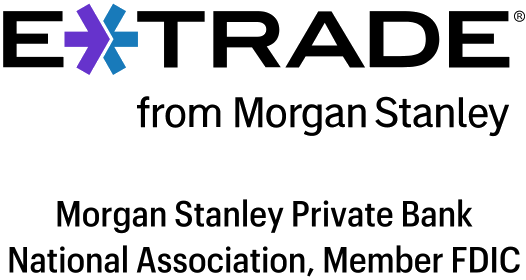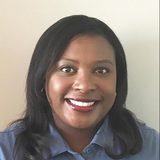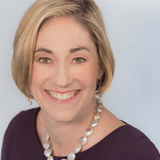How Much Should I Have in Savings?
Determine your target savings goal and then save consistently until you get there.

Many, or all, of the products featured on this page are from our advertising partners who compensate us when you take certain actions on our website or click to take an action on their website. However, this does not influence our evaluations. Our opinions are our own. Here is a list of our partners and here's how we make money.
Identify your savings target by adding up your core expenses for three to six months.
Build up your balance by setting up recurring transfers to a high-yield savings account.
After you’ve reached your savings goals, consider investing extra money for higher returns.
How much savings should I have?
There is no one-size-fits-all answer to the question of how much money you should have in your savings account. The standard recommendation is to have enough to cover three to six months’ worth of basic expenses. As a goal, that number can be steep. In reality, you can benefit from saving any amount.
When it comes to setting your target, the right number for you will take into account your expenses and how much you’re able to save consistently.

Member FDIC
Forbright Bank Growth Savings

4.00%
$0

Member FDIC
Axos ONE® Savings

4.31%
$1,500

Member FDIC
Varo Savings Account

5.00%
$0

Member FDIC
E*TRADE Premium Savings

3.75%
$0
Find your target savings number
To determine how much you need in savings, it helps to know how much you’ll need to keep up with your most important bills for a few months if you lose income. To start, figure out how much you typically spend to pay your bills. You can do this by reviewing recent bank and credit card statements.
Consider the essential expenses, such as rent or mortgage payments, insurance premiums, loan and other debt payments, as well as spending on groceries and transportation. Don’t include expenses that you’d cut in an emergency, such as concerts.
» Need help paying bills? Read more on how to prioritize your bills and find help
Save consistently
Say your core monthly expenses total about $3,000. Having enough saved to cover three to six months' worth of expenses means you’ll need to have between $9,000 and $18,000 saved. You can use this savings goal calculator to see how much you'd need to save every month to save up for your goal, depending on when you hope to achieve it.
If putting away that amount of money is daunting, try not to focus on the end amount. Saving money consistently, regardless of amount, is how you can build financial security. If you get paid once a week and you’re able to save $25 with each paycheck, you’ll have about $650 saved after six months. That could potentially pay for an unexpected expense without your having to take on debt.
Consider setting up a recurring auto transfer from your checking to your savings account. As long as it won't cause you to overdraft your account, it's a good tool for maintaining consistency.
» For more savings tips, read NerdWallet’s guide on how to make a savings plan
Savings accounts at banks are federally insured by the Federal Deposit Insurance Corp. (and by the National Credit Union Administration for credit union accounts), up to $250,000 per depositor, for each ownership category (such as joint accounts and single accounts), per insured institution.
You could also look for small ways to reduce optional expenses and then put that extra cash into an FDIC- or NCUA-insured emergency fund. For example, consider free, community-sponsored activities for weekend entertainment. You don’t have to cut everything you enjoy — but sometimes small tweaks can help you save more cash.
» Want to explore more? Read about ways to earn extra money
Maximize your savings

Once you have a plan to save regularly, make your money work hard for you by depositing it into a high-yield savings account. The best savings accounts have low or no monthly fees and earn strong rates.
Consider that the average rate for savings is only 0.40%, according to the FDIC. And some of the largest banks have savings accounts that earn only a 0.01% annual percentage yield. With that yield, if you deposited $3,000, you’d earn less than $15 in interest after a year.
On the other hand, if you put that same $3,000 in a high-yield savings account that earns a 4% APY, it would earn more than $120 after a year. That’s a nice chunk of money for simply picking a better account, one that earns much more than the FDIC average. And that interest also earns interest over time. This is called compound interest, and it helps your savings grow even more.
Use NerdWallet’s savings calculator to add up how much your savings balance could grow.
» Ready to start earning higher yields? Learn about the best places to save money and earn interest
Save for nonemergencies
Building an emergency fund is important for your financial health, but you might have other savings goals, too.
Saving for a rainy day (or a fun one)
Once you’ve built up your emergency fund, consider saving for expenses that aren’t necessarily emergencies but also aren’t part of your regular budget (think replacing an older appliance or taking care of minor home maintenance needs). For those types of costs, consider creating a rainy day fund in a separate savings account.
You could also treat yourself by opening a savings account for something fun, such as a vacation.
Keep savings for different goals separate to avoid dipping into emergency funds for nonemergencies. Some banks and credit unions allow you to open several subaccounts for different savings goals, helping you stay organized.
Other types of savings accounts
If you’re fortunate enough to have money to spare, consider ways to earn even higher yields. Certificates of deposit, for example, often earn higher rates than savings accounts and are an option if you don’t need access to your cash for months or years. As with savings accounts, CDs are also federally insured up to $250,000 per depositor. Check out NerdWallet’s list of best CDs to learn about current rates.
Money markets are another type of savings account, but unlike regular savings options, some MMAs come with debit cards and the ability to write a few checks each month. However, some MMAs also have higher deposit minimums and monthly fees. The best MMAs have lower fees and competitive rates.
Investing and saving for retirement

If your goal is to save larger amounts of money, you could also look into investing. This is a longer-term strategy to grow wealth. Returns can be higher than savings account yields, but they are not guaranteed. Read NerdWallet’s guide on how to invest money to learn more.
Saving for retirement is another consideration. There are special accounts, including individual retirement accounts and 401(k) plans, that give tax advantages for saving until you are close to or at retirement. Read NerdWallet’s primers on IRAs and 401(k) plans to learn about these accounts and how to determine your target retirement savings amount. The earlier you start saving for retirement, the more time your money will have to potentially grow. You can use this retirement calculator to try out different scenarios to see how much you could have in your retirement account at different ages.
The recommended amount of money to have in savings is different for each person. But as long as you make deposits regularly and make sure you earn an attractive interest rate, you can build a savings balance that is right for you.












